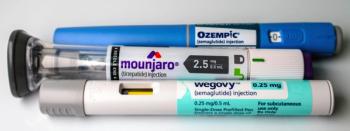
How Much Will Your Prescription Cost? It Depends on Where You Live
How much you shell out for prescription medicine at the pharmacy counter depends on where you live, according to an analysis by GoodRx.
The amount of money you shell out for prescription medicine at the pharmacy counter depends on where you live, according to a
The consumer website took a look at data on cash prices of the 500 most commonly prescribed medications in the 30 most populated cities nationwide from April 2017 to April 2018. Numbers were based on a representative sample of US prescription fills (not using GoodRx) and come from several sources, including pharmacies and insurers.
New York topped the list of most expensive cities for drugs, landing 20.10% above the national average, followed by San Francisco at 12.60% above the national average. Three other California cities—Los Angeles, San Diego, and Sacramento—made the top 10 list, as well as Philadelphia, Pennsylvania; Raleigh, North Carolina; Birmingham, Alabama; Orlando, Florida; and Cleveland, Ohio.
Just 150 miles away from Cleveland, Columbus, Ohio, came out as the least expensive city for prescription drugs, falling below the national average by 21.70%, followed by Atlanta, Georgia, at 18.60% below the national average and Houston, Texas, at 17.40% below the national average. Other cities on the list included Dallas, Texas; Denver, Colorado; Salt Lake City, Utah; Indianapolis, Indiana; Washington, DC; Las Vegas, Nevada; and Tampa, Florida.
These vast differences in prices can be seen when
Metformin:
Birmingham: $43.00
Boston: $28.57
Columbus: $11.16
New York: $66.23
San Francisco: $49.36
Tamiflu:
Birmingham: $197.48
Boston: $185.46
Columbus: $189.61
New York: $155.46
San Francisco: $201.61
Ondansetron:
Birmingham: $356.67
Boston: $169.71
Columbus: $132.86
New York: $578.12
San Francisco: $368.71
While some cities with high prescription drug prices, such as New York and San Francisco, can be explained in part by the high cost of living in the city, other high-cost cities, such as Washington, DC, fall below the national average. Notably, Raleigh, which has a lower cost of living, landed above the national average.
Another factor that can contribute to these differences in prices is what the researchers refer to the “big box” effect,” where many larger big box stores offer popular brand and generic drugs for a lower price. Some states have more of these stores, providing residents with more cost-effective choices.
The variation in drug prices doesn’t just vary by city, but they can also vary on the same block at 2 different pharmacies,
The researchers also mention pharmacy retail markup on prescriptions. “Some pharmacies will claim a higher margin to support their business, and those pharmacies may be distributed unevenly across states,” they write.
However, drug pricing is complex, and these reasons alone cannot entirely explain the range in prices, they note. In order to try and mitigate high prices, they recommend several strategies:
- Since drug prices can vary from one pharmacy to the next, shop around before buying.
- Look for a pharmacy discount program in your area.
- Fill a 90-day supply, rather than a 30-day supply.
- Start a conversation with your doctor or pharmacist, who can help work through insurance coverage issues and/or find more affordable options.
Newsletter
Stay ahead of policy, cost, and value—subscribe to AJMC for expert insights at the intersection of clinical care and health economics.

















































